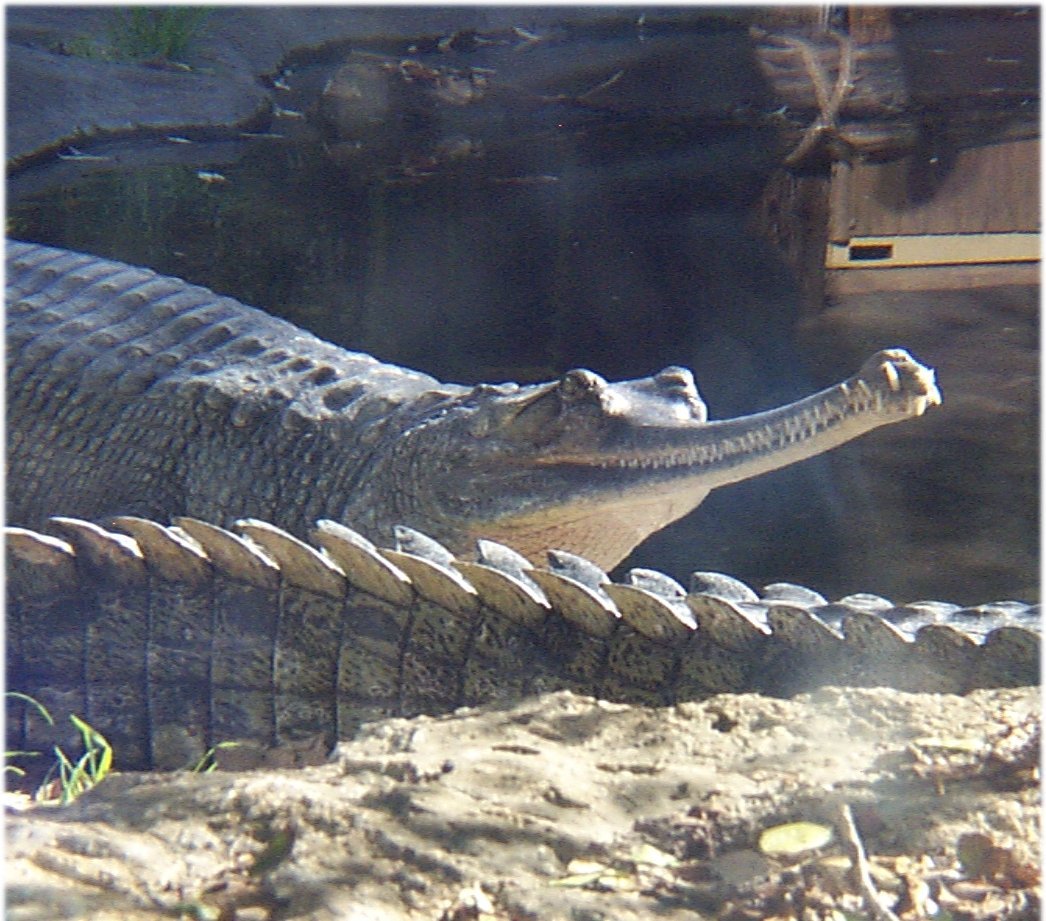| Comments about the gavials of the Fort
Worth Zoo: When I spoke to a man at the Fort Worth Zoo, he told me
that there were 3 gavials at the zoo, I only saw 2 of them on my visits,
but I suppose the other one could be hiding. There is 1 male and 2 females,
and according to the zookeeper, they have no names (what a shame). Also,
when I asked about their mating habits, he said that the gavials at the
Fort Worth Zoo were too young to mate--they must first reach a length of
11-13 feet, and their gavials were only 7-10 feet. They are fed frozen
trout with vitamin supplements, and the pool they live in is heated year
round. The zoo received the gavials in 1992; the female gavials came from
the St. Augustine Alligator Farm, and the male came from the Bronx Zoo. |

